
Mum of one, Australian Claire Renton is the Animation Director for BAFTA award-winning show Bluey. In this exclusive interview, Claire shares how they had to fight to keep the Aussie accents, why the show was designed to get parents to watch it with their kids and how she balances work and motherhood.
If you have little kiddos, chances are your whole family adores watching the Emmy and BAFTA award-winning show Bluey, starring the blue pup Bluey, her (yes Bluey is actually a girl!) sister Bingo and role model parents Chilli and Bandit. If your kids here in Singapore have developed a bit of an Aussie accent, this cuter-than-cute series might be to blame. In this exclusive interview, we chat with Claire Renton, Bluey’s Animation Director who has flown in from Brisbane Australia for Singapore Comic Con 2023, where lots of fun Bluey experiences await from live shows to Bluey meet and greets. Claire reveals how Bluey was created to be a show that parents and kids watch together, how the team had to fight for the accents to remain Aussie and not be changed to American ones, and how she balances work and parenting her 18-month-old son, William.
How did the concept of Bluey come about, and what inspired the creation of the show?
Bluey is all about play. It’s such a vital aspect of a child’s development, especially that period of imaginative play that is in full swing when a child is around preschool age. It’s how they explore and make sense of the world around them.
Bluey was created by Joe Brumm and was inspired by his family life. He and Producer Charlie Aspinwall both have two daughters roughly the same age and were having these amazing experiences watching them interact with the world through creative play.
What were the early days of animation creation like – were you involved in the original Bluey character designs?
The early days were really exciting! I wasn’t involved in the character design – that’s the job of the art director, but as a lead animator in season one of Bluey, I was heavily involved in creating the character’s performances. Every new Bluey episode was an opportunity to explore and develop their mannerisms, movement style and acting choices. Three Bluey seasons on and our characters are more established, so we need to be mindful of ensuring their performances feel true to their personalities.
Now that I’m an animation director, I don’t get to animate as much as I used to, but I’m responsible for anything that moves on screen, which means lots of planning with our designers, animators and visual effects animators.

Now that you are a parent do you find yourself working differently/seeing work through a different lens? Has this helped with the creative process at all?
Becoming a parent has helped with my decision-making in the creative process. I can tend to be a perfectionist, and at times that would mean I would put off making certain creative decisions because I wasn’t sure it was the ‘right’ choice. Now that I’m a mum, I have a lot less time! It’s really forced me to become more confident in my decision-making and to accept mistakes as part of the process.
How long does it take to create each Bluey episode (from story angle to animation design and voice recordings, etc.)?
From the script through to design, animation and final sound, each Bluey episode can take three to four months to complete. The animation of each episode takes about four weeks with a bit of extra time to create any visual effects on top of that. We start work on a new Bluey episode each week, so there’s a lot of spinning plates in production at any given phase!

What do you believe sets Bluey apart from other kids’ TV shows, and how does the team ensure it resonates with both children and parents?
Bluey was intentionally designed to be a co-viewing show, one that would be enjoyable for parents to watch as well. It certainly speaks to the experiences of parenting kids at that preschool age, and Bandit and Chilli are funny, engaged and playful parents. I have a lot of friends who tell me they love watching Bluey as much as their kids do and will still be watching once their child has wandered off to play with something else!
That’s certainly something that the whole team takes pride in! We love the Bluey episodes too, and I think you can see the amount of love, attention to detail and care that goes into each episode.
We understand you are protective of your child’s privacy preferring not to share pictures of them online — tell us about this.
My husband and I both grew up before social media and were able to choose what photos of ourselves we wanted to put online. We want our son to have the same choice.

How do you balance work and parenting?
I’m not sure that I always do! Animation is a project-based industry, so there are times when I’ll need to be at the studio more, but also times when I can be at home more too. We try and make the most of those quieter periods and put boundaries in place for when things get a little busier.
My husband and I share parenting and housework duties (he does all the cooking and vacuuming and I do washing and cleaning), and we’re both really involved in all aspects of raising Will. We also get a lot of help from our parents! They love spending time with him and have been an incredible support to us.

Are there specific themes or values that the team aims to incorporate into each Bluey episode, and how do you strike a balance between fun and educational content?
There’s an episode from season one called Bike and even now, whenever I watch it I get teary-eyed and a lump in my throat. The premise is really simple – Bluey is learning to ride her bike at the park and is frustrated because she keeps falling off. She and Bandit take a break and watch three other kids going through their own struggles to drink from a water fountain, climb a jungle gym and put on a backpack. It’s a really funny episode, but there’s this point where the music lifts and each child manages through perseverance to achieve these little tasks they’ve been struggling with. It’s all visual, there’s no dialogue telling the audience what the theme is, but Bluey regains the confidence to get back on her bike at the end of the episode, and I always walk away ready to tackle whatever struggles I’m facing.
There’s a special magic in being able to blend the two together through humour and treating those deeper themes with a light touch.
Why did they choose Aussie accents and Aussie references?
Bluey is inherently Australian-made and about life as an Australian family. When it first began to have international interest, there was some pressure to dub over the Aussie accents with American ones. I’m glad they didn’t! It’s funny to watch fairy bread and weird phrases like ‘wackadoo’ become part of the international vernacular.
How do you ensure scenes and storylines are relatable when you have such a broad audience across different countries?
I think modern audiences are used to watching different cultures being represented, but the innate compulsion towards play in children is so universal, as is the hilarious and exasperating experience of parenthood.
Any funny behind-the-scenes anecdotes you want to share?
There’s so much our production team does to make working on the show a special experience! We brief the team on a new episode every week, and our wonderful producer Sam always decorates the briefing room in the theme of the episode. She even made a duck cake! We also have a costume party to celebrate the completion of every ten episodes, making the show can be a marathon at times, so it’s really important to reflect and celebrate those milestones.
Thanks so much for your time Claire! For families who are Bluey Fans, head on over to Singapore Comic Con 2023 from 9 to 10 December where you can meet and greet with Bluey, watch a Live Experience Bluey show and take part in fun activities. Bluey episodes are available to watch on CBeebies (StarHub channel 303 and Singtel channel 236).






 View All
View All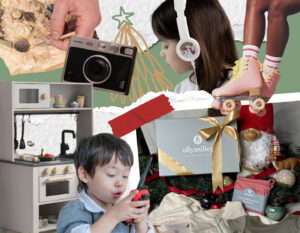
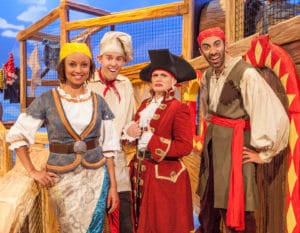




 View All
View All








 View All
View All




